Chester County is primarily rural and suburban, which means cars will remain king, but other transportation options can be added to the mix, giving residents more choices for moving about.

Bus shelters
Taking a bus is much better for the environment than driving a car, but it can be difficult or sometimes unpleasant to take a bus. Bus shelters are a simple way to make the experience more appealing.
Action: Municipalities can require developments to provide bus shelters and pulloff areas and can work with companies that want to put bus shelters in their community. Learn More
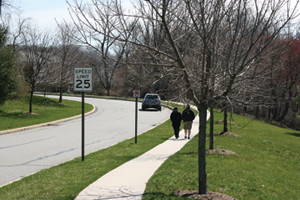
Sidewalks
When sidewalks exist, people are much more likely to walk and less likely to drive.
Action: Municipalities can require sidewalks in their subdivision and land development ordinances while making sure sidewalks are not waived during the development review process. Learn More

Train station improvement
Like buses, trains are an important transportation mode that can reduce air pollution.
Action: Although local municipalities do not control train station areas, they can advocate for improvements and provide sidewalk connections to train stations. Learn More

Safe routes to schools
Children who have safe walking routes to school can walk instead of taking a school bus or being driven by their parents.
Action: Municipalities can participate in safe routes to school programs, work to improve their sidewalk system and crosswalks, and support special events, like walking school buses. Learn More
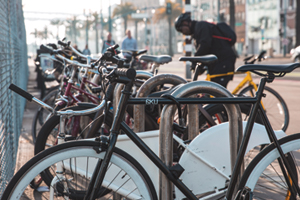
Bike facilities
Bicyclists, especially commuters, need bike facilities, including bike racks, storage lockers, bicycle repair stations, and, in the work place, showers.
Action: Municipal zoning ordinances can require these facilities or make this an optional bonus.
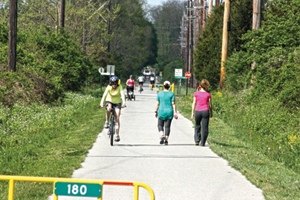
Trails
Trails provide safe places for commuters and recreational users to walk, bike, or ride a horse. When they're on a trail, they're not in a car.
Action: Local municipalities can create a trail system by planning for trails, requiring new developments to install trails, building municipal trails, and connecting to regional trails. Learn More
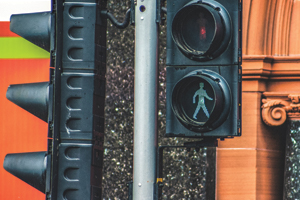
Intelligent transportation systems
Keeping traffic moving through coordinated traffic signals and other intelligent transportation systems reduces air pollution, because vehicles spend less time idling at traffic lights.
Action: Through their control of traffic signals, municipalities can significantly improve road functioning by using Intelligent Transportation Systems. Learn More
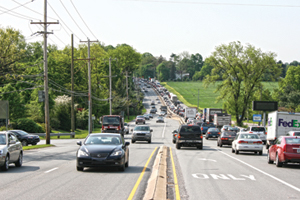
Traffic congestion reduction
Traffic congestion adds to air pollution.
Action: Local municipalities can enact traffic impact fees and use these funds to improve intersections and roads, including state-owned roads. In addition, when land developments are proposed, communities can require traffic studies and require improvements to adjoining roads. Learn More
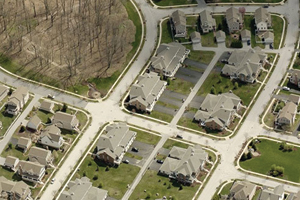
Walkable development
Development can be designed to encourage walking by having sidewalks lead to front doors, locating buildings close to the street, and creating interesting and enjoyable streetscapes.
Action: Municipal zoning ordinances can include design standards for walkable development, and local communities can improve their streetscapes with decorative lights, benches, street trees, and landscaping. Learn More
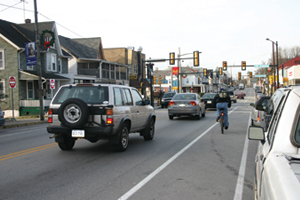
Bike lanes
Bike lanes, particularly on busy roads, are a critical component of a safe bicycle network.
Action: Municipalities can work with PennDOT's repaving program on the creation and maintenance of bike lanes for state-owned roads while installing bike lanes on roads they own themselves. Learn More


